Syria holds history in its stones, from the vast ruins of Palmyra to the echoing arches of ancient citadels. The historical places in Syria offer a glimpse into the empires, the footsteps of prophets, and the resilience of people. These are not just archaeological sites but a part of daily life, worship, and memory. Walk through Roman streets, visit early Christian churches, stand where great caliphs once ruled. You will then understand why Syria remains one of the world’s richest historical landscapes. For travellers and history seekers, these landmarks offer an experience that is both deeply moving and entirely unforgettable.
Top 10 Historical Places In Syria
Step into a land of historical places in Syria where ancient ruins, sacred shrines and castles reveal the heart of civilisations that shaped the world:
1. Palmyra (Tadmur)
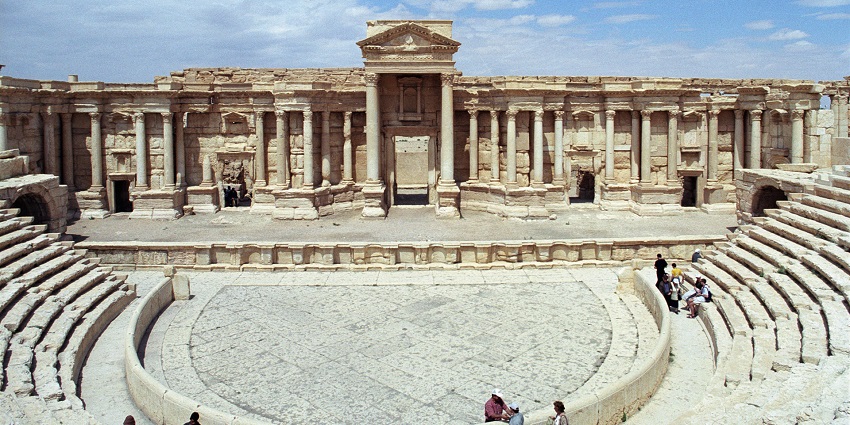
Photo: Jerzy Strzelecki / Wikimedia Commons
Set deep in Syria’s semi-arid heart, Palmyra rose as a caravan hub linking Persia, India, and Rome. Founded in the second millennium BCE, it later flourished under Roman rule, becoming one of the empire’s wealthiest cities in the East. It was on the UNESCO World Heritage List in 1980. As you explore the remnants of its Great Colonnade, step beneath the archway once known as the Gate of Triumph. Despite tragic destruction in recent years, what survives tells of resilience. You’ll walk through a chapter of human civilisation that once influenced East and West.
Timings: 9 AM – 5 PM
Nearby Attractions: Valley of the Tombs, Palmyra Museum, Fakhr-al-Din al-Ma’ani Castle
2. Crac Des Chevaliers
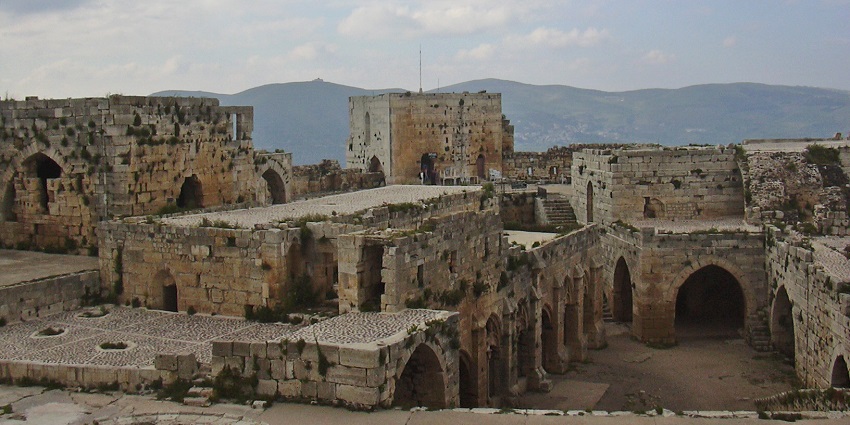
Photo: Herbert Frank / Wikimedia Commons
Above the surrounding hills near Homs, Crac des Chevaliers stands as one of the most remarkable medieval castles. Built by the Hospitaller Knights in the 12th century, this fortress guarded the Homs Gap, a crucial route between the coast and inland Syria. The outer walls, fortified towers, and perfectly engineered inner keep were designed to withstand any siege. You can still wander through vaulted halls, climb defensive towers, and gaze through arrow slits once used in Crusader battles. Unlike most medieval sites, Crac allows you to experience medieval military architecture up close and without barriers. It was recognised by UNESCO in 2006.
Timings: 8 AM – 6 PM
Nearby Attractions: Saint George Monastery, Al-Husn village, Wadi al-Nasara
3. Umayyad Mosque (Great Mosque Of Damascus)
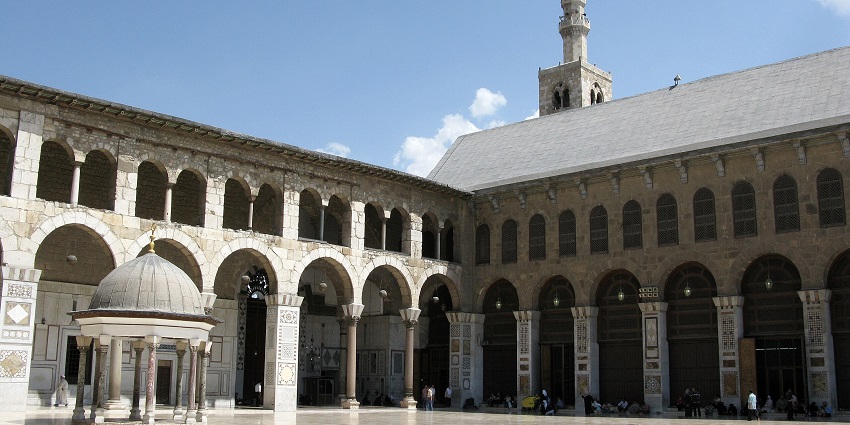
Photo: Vyacheslav Argenberg / Wikimedia Commons
The Umayyad Mosque rises at the centre of Old Damascus, where layers of history meet in one sacred space. Built in 705 CE by Caliph al-Walid I, it replaced a Roman temple and a Christian basilica, both of which once stood on this very site. The courtyard shines under sunlight, bordered by long arcades and mosaic-covered walls that shimmer with rivers and gardens. Pilgrims visit the shrine of John the Baptist, and many pay respects at the Maqam of Imam Hussein inside. The structure itself shaped mosque architecture across the Muslim world and continues to welcome visitors of every background.
Timings: 9 AM – 9 PM, closed during prayers
Nearby Attractions: Azem Palace, Al-Hamidiyah Souq, Damascus Citadel
4. Bosra Roman Theatre
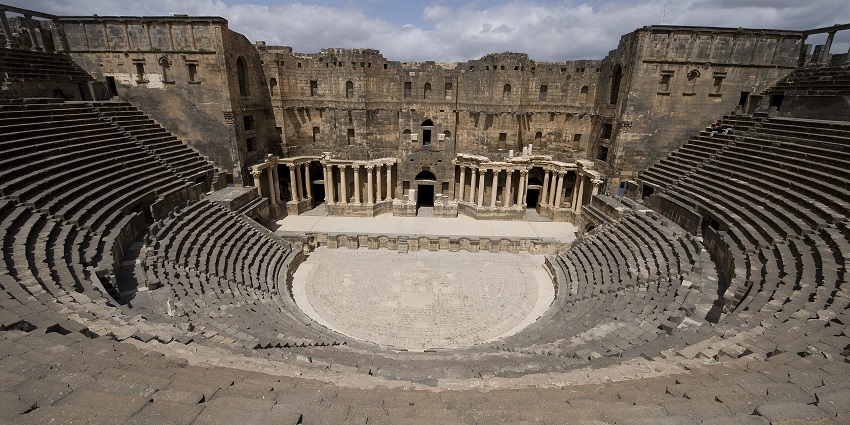
Photo: Dosseman / Wikimedia Commons
South of Damascus, in the old city of Bosra, stands a Roman theatre. Built in the second century CE, it once seated more than 15,000 people, making it one of the largest in the region. What sets it apart is its black basalt stone, durable, dark, and striking. This material helped the structure survive with most of its features still intact, from stage wings to high-upper seats. During the Islamic era, thick walls and towers were added, converting the theatre into a fortified citadel. Today, you can climb those towers for wide views of Roman ruins and quiet plains beyond.
Timings: 9 AM – 6 PM
Nearby Attractions: Bosra Citadel, ancient mosques, Roman ruins
5. Aleppo Citadel
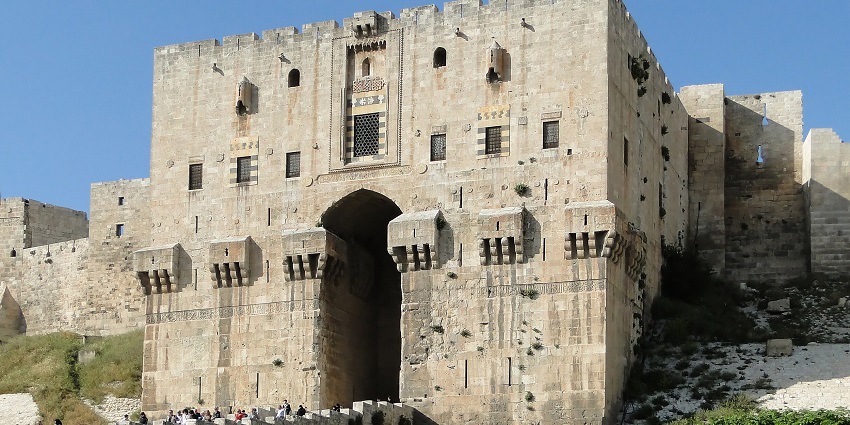
Photo: Bernard Gagnon / Wikimedia Commons
At the centre of Aleppo’s Old City stands the Citadel, a fortress built on a hill that has seen human settlement since the 3rd millennium BCE. Most of the current structure was shaped during the 12th-century Ayyubid rule, though earlier layers still lie beneath. The entrance is reached by a stone bridge, which leads into a massive gate tower. Inside the citadel walls, walk through the narrow stairways, halls that once hosted rulers, and wells, granaries, and mosques. The fortress was more than a military post; it was a royal residence, a seat of power, and a final stronghold in troubled times.
Timings: 8:30 AM – 5:30 PM
Nearby Attractions: Souq al-Madina, Great Mosque of Aleppo, traditional hammams
6. Apamea (Afamia)
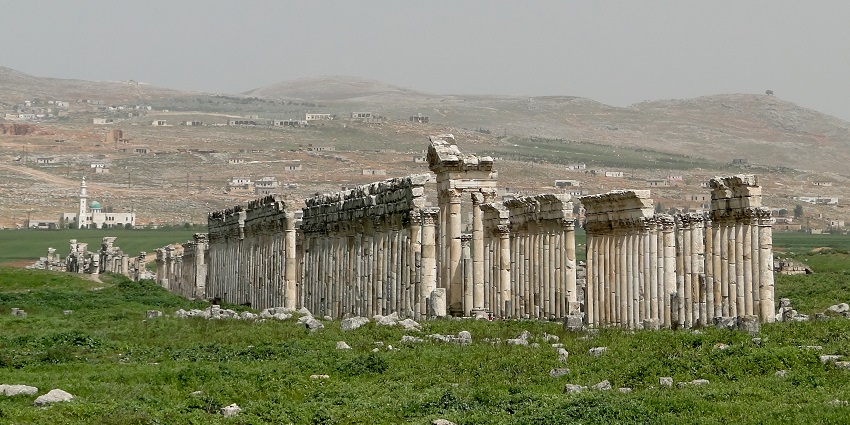
Photo: Bernard Gagnon / Wikimedia Commons
The ancient city of Apamea once stood as a major centre of trade, culture, and military strategy in the Seleucid Empire. Founded in the 3rd century BCE, it later became a key Roman stronghold, famous for its sheer scale and organisation. The most iconic feature here is the Cardo Maximus, a grand avenue stretching nearly two kilometres, lined with over 1,200 columns. Each one has its own carved design, some twisted like ropes, others etched with vines and leaves, and you can still walk between them. Though much of the city lies in ruins, the layout is clear, and it offers a rare chance to experience Roman urban planning.
Timings: 8 AM – 4 PM
Nearby Attractions: Al-Mudiq Castle, Roman colonnades, Orontes River
7. Maarrat Al Numan Museum
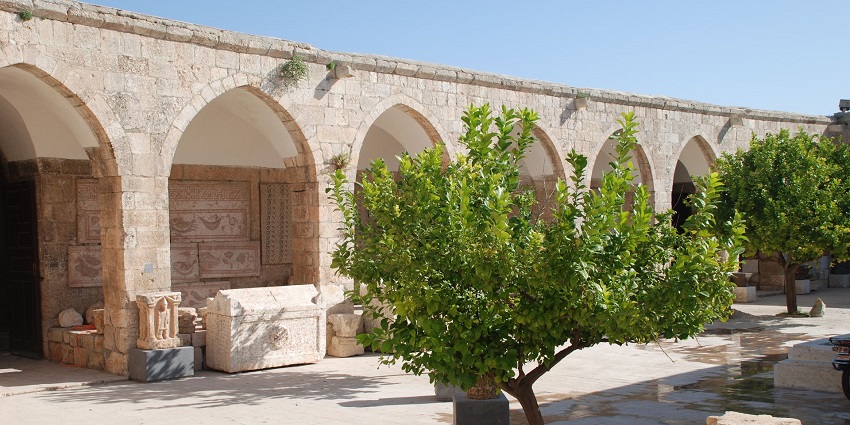
Photo: Bertramz / Wikimedia Commons
Housed in a restored Ottoman-era caravanserai, the Maarrat al-Numan Museum holds one of Syria’s finest collections of Byzantine and Roman mosaics. The building itself, with its domed halls and thick stone walls, sets the tone even before you reach the displays. Located in the town of Maarrat al-Numan, the museum tells a visual story of ancient Syria through intricate floor mosaics. Scenes of gods, myths, daily life, and wildlife cover entire rooms, offering insight into the beliefs and artistry of early civilisations. Many of its mosaics have been preserved and restored.
Timings: 9 AM – 3 PM
Nearby Attractions: Mosaic collections, Khan As’ad Pasha ruins
8. Qasr Al Hayr Al Sharqi
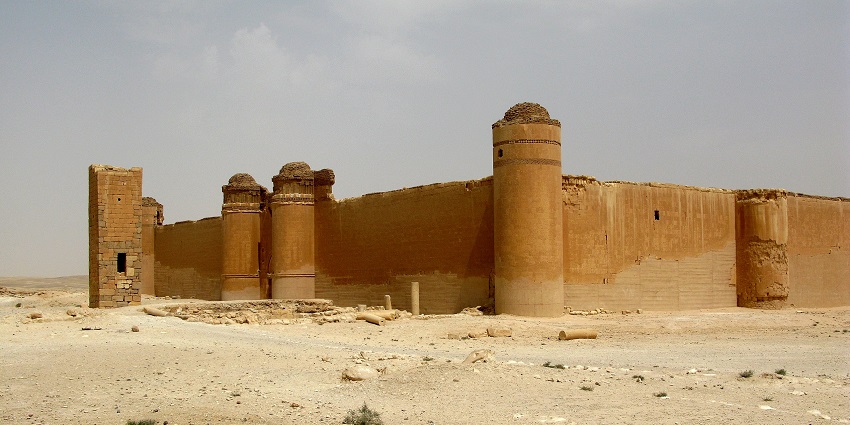
Photo: Vyacheslav Argenberg / Wikimedia Commons
In the eastern Syrian desert, you’ll find the ruins of Qasr al-Hayr al-Sharqi. It is a remote Umayyad palace complex built in the early 8th century under Caliph Hisham. Though isolated today, it once played a vital role in connecting the Islamic empire’s heartlands with the edges of its eastern frontier. The complex still shows sections of decorated stonework, towers, courtyards, and traces of irrigation systems that made desert life possible. It is a strong example of how the early Islamic world brought beauty and structure even to its most distant outposts.
Timings: Daylight hours only
Nearby Attractions: Caravanserai ruins, desert roads
9. Saladin’s Castle (Qalaat Salah El Din)
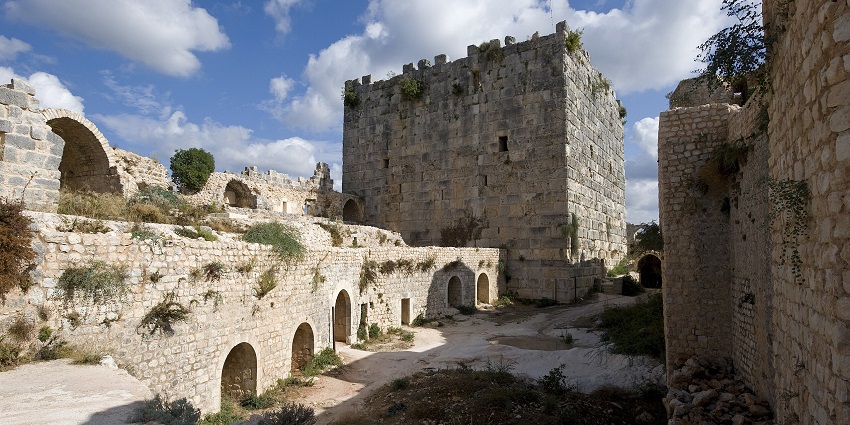
Photo: Dosseman / Wikimedia Commons
High above the hills east of Latakia, Saladin’s Castle sits in silence, carved into stone and history. The site once belonged to the Byzantines, who recognised its natural strength. Thick walls block the wind, and faint traces of old towers and storage rooms tell you this was a place made to last. Rainwater still gathers in the old cisterns. The remains of a chapel sit behind worn archways. From the upper ramparts, the coastline appears in the distance, far beyond the forest. It’s one of the few historical places in Syria where the stone still holds the memory of every battle fought to keep it.
Timings: 9 AM – 5 PM
Nearby Attractions: Ugarit ruins, coastal Latakia, Al-Haffah
10. Hanania Church
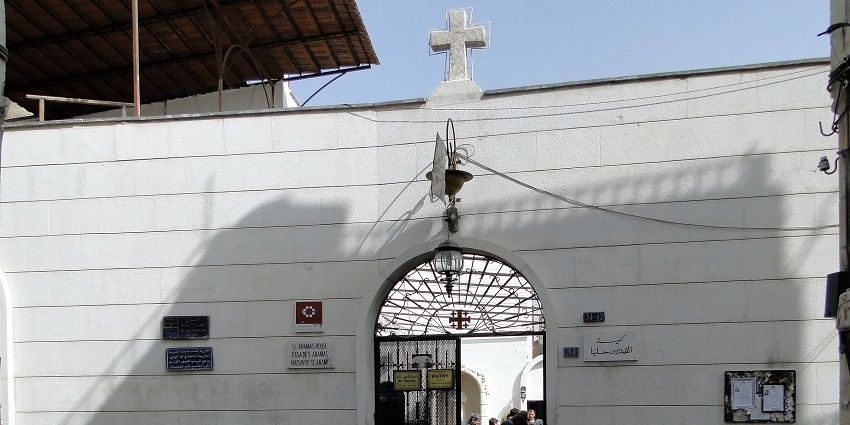
Photo: Bernard Gagnon / Wikimedia Commons / Image For Representation Only
Hanania Church is found in Bab Sharqi, one of the oldest parts of Damascus. It is believed to be the home of Ananias, the man who welcomed and baptised Saul of Tarsus, later known as Saint Paul. The church is built below street level and made of rough stone. It is small with narrow rooms and plain walls. You can find old icons, small wooden crosses, and a few benches. It marks a turning point in the story of Saint Paul. People still come here not for beauty, but because of what happened in this quiet space nearly two thousand years ago.
Timings: 10 AM – 6 PM
Nearby Attractions: Straight Street, House of Saint Ananias, nearby chapels
The historical places in Syria are landmarks of belief, ambition, resilience, and memory. From the silence inside Hanania Church to the vast ruins of Palmyra, each place carries a legacy. They are living reminders of Syria’s deep cultural roots and its unmatched role in human history. Planning a trip to Syria’s most iconic historical landmarks? Let TripXL guide your experience with safe itineraries, verified local guides, and up-to-date travel support.
Cover Photo: Bernard Gagnon / Wikimedia Commons


 WhatsApp
WhatsApp
 Twitter
Twitter









